Code Descriptions
Filters
 Bison
Bison
 Bison
Bison 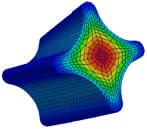
Capabilities:
Built on top of MOOSE, which solves partial differential equations (PDEs) important to fuel performance via finite element (energy conservation, stress divergence, and species migration), BISON adds specific fuel behavior and material models designed to represent the response of fuel and cladding/structural layers in a variety of reactor types.
Applications:
UO2, TRISO, metallic, uranium mono nitride/uranium mono carbide (UN/UC), and U3Si2
Integrations:
BISON can be coupled to other codes that supply material models, boundary conditions (T/H), and power source term (neutronics); examples include TRACE and MPACT
Coming Soon:
High burnup structure models for extending light-water reactor (LWR) operation, UN/UC, predictive strain-based cladding performance, uncertainty quantification, particle fuel verification and validation (V&V)
Contacts:
- Stephen Novascone ([email protected])
Publications:
- Multidimensional multiphysics simulation of TRISO particle fuel
- Modeling porosity migration in LWR and fast reactor MOX fuel using the finite element method
- 3D modeling of missing pellet surface defects in BWR fuel
- Validating the BISON fuel performance code to integral LWR experiments
- Multidimensional multiphysics simulation of nuclear fuel behavior
- Analysis of fuel rod behavior during loss-of-coolant accidents using the BISON code: Cladding modeling developments and simulation of separate-effects experiments
Reports:
Access:
 CTF
CTF
 CTF
CTF 
Capabilities:
CTF is a modernized version of the thermal-hydraulics subchannel code COBRATF. CTF uses a two-fluid, two-phase flow modeling approach for modeling fluid flow and heat transfer and provides both subchannel and 3D solution options. Flow can be modeled as three independent fields: continuous liquid, vapor, and liquid droplets. Two-phase flow and heat transfer models consider both pre- and post-critical heat flux conditions. CTF also provides a set of solid thermal conduction modeling capabilities that can be used for tubes, cylinders, and nuclear fuel rod geometries. A nuclear fuel rod solver, CTFFuel, is also provided for modeling of burnup-dependent fuel temperatures.
Applications:
CTF is used primarily for modeling in-core light water reactor fluid flow and heat transfer in normal and off-normal operating conditions. It is used for performing steady-state and transient simulations of pressurized water reactor (PWR) and boiling water reactor (BWR) conditions including depletion conditions, prediction of departure from nuclear boiling (DNB), and reactivity-initiated accident (RIA) analysis
Integrations:
CTF is coupled to the VERA core simulator for calculation of thermal-hydraulic feedback needed by neutronics, fuel performance, and crud simulation tools. CTF and CTFFuel have also been integrated into the NEAMS Workbench.
Coming Soon:
Current development activities are focusing on improvements for BWR modeling and simulation, including development and implementation of more accurate closure models, addition of support for BWR-specific geometry, and addition of critical power modeling capabilities.
Contacts:
- Robert Salko, Jr. ([email protected])
- Ben Collins ([email protected])
Publications:
- Optimization and parallelization of the thermal-hydraulic subchannel code CTF for high-fidelity multi-physics applications
- VERA core simulator methodology for pressurized water reactor cycle depletion
- Implementation and assessment of wall friction models for LWR core analysis
- Implementation of a Spacer Grid Rod Thermal-Hydraulic Reconstruction (ROTHCON) Capability into the Thermal-Hydraulic Subchannel Code CTF
- A new fuel modeling capability, CTFFuel, with a case study on the fuel thermal conductivity degradation
- On the prediction of critical heat flux using a physics-informed machine learning-aided framework.
Reports:
Access:
CTF is accessible as a standalone capability through North Carolina State University (NCSU). CTF is also accessible through Radiation Safety Information Computational Center at Oak Ridge National Laboratory as part of VERA.
 Griffin
Griffin
 Griffin
Griffin Capabilities:
Developed in FY 2020, Griffin is a time-dependent finite-element based reactor physics code built using the MOOSE framework with weak form formulations for diffusion, PN, and 1stand 2nd-order SN transport and a variety of equivalence techniques
Applications:
Griffin is specially designed to support multi-physics applications and to natively couple to any MOOSE application. It supports both two-step and on-line cross sections preparation and includes state-of-the-art depletion solvers.
Integrations:
Griffin integrates two previously code suites, the INL-developed MAMMOTH/Rattlesnake code suite and the ANL-Developed MC2-3/PROTEUS code suite
Coming Soon:
Improved heterogeneous transport and on-line cross section preparation
Contacts:
- Javier Ortensi ([email protected])
- Changho Lee ([email protected])
Publications:
Reports:
Access:
 Grizzly
Grizzly
 Grizzly
Grizzly 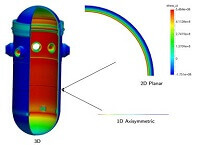
Capabilities:
Grizzly simulates progression of aging mechanisms in nuclear power plant components and the integrity of these components subjected to degradation during normal and off-normal loading conditions. BlackBear is an open-source code, with non-nuclear specific models, that provides a subset of Grizzly’s capabilities.
Applications:
- LWR Reactor pressure vessel (RPV) probabilistic fracture mechanics (PFM): 1D, 2D, or 3D modeling of RPV thermo-mechanical response during pressurized thermal shock (PTS) transient events. Semi-empirical model currently used for embrittlement prediction. PFM model evaluates the probability of large sets of flaws using Monte Carlo analysis.
- Concrete degradation: Coupled physics (thermal and moisture transport and mechanics) modeling of processes leading to expansive reactions in concrete due to alkali-silica reaction (ASR) and radiation induced volumetric expansion (RIVE)
- High temperature creep modeling: Models for high temperature creep of advanced reactor structural materials using both traditional phenomenological approach and a reduced order model based on material microstructure
Integrations:
- VERAShift: Provides 3D fluence maps used for radiation-induced damage in RPVs
- NEML: Material constitutive model library that provides phenomenological high temperature creep models
- MASTODON: MOOSE-based code for simulation of seismic response of structures
Coming Soon:
- Coupling with 3D computational fluid dynamics (Nek5000) to provide thermal boundary conditions for RPV during PTS
- Predictive models for LWR RPV steel embrittlement based on multiscale modeling are under development
Contacts:
- Benjamin Spencer ([email protected])
Publications:
- Parametric study of irradiation effects on the ductile damage and flow stress behavior in ferritic-martensitic steels
- Evaluation of coupling approaches for thermomechanical simulations
- Preferential Cu precipitation at extended defects in bcc Fe: An atomistic study
- Crystal plasticity modeling of irradiation effects on flow stress in pure-iron and iron-copper alloys
- Modeling copper precipitation hardening and embrittlement in a dilute Fe-0.3at.%Cu alloy under neutron irradiation
- Modular system for probabilistic fracture mechanics analysis of embrittled reactor pressure vessels in the Grizzly code
Reports:
Access:
 Lower Length Scale Methods
Lower Length Scale Methods
 Lower Length Scale Methods
Lower Length Scale Methods 
Capabilities:
In addition to the Marmot code, a suite of lower length scale methods are used to obtain information for input to Marmot as well as to BISON directly. These codes are typically not exclusively developed or maintained by the Nuclear Energy Advanced Modeling and Simulation (NEAMS) program and in some cases, they are community or off-the-shelf codes, but knowledge and experience of using them in the context of multi-scale nuclear fuel performance is a unique capability maintained by NEAMS. The codes include but are not limited to VASP (density-functional theory) and LAMMPS (empirical potentials) for atomistic scale simulations, Centipede (MOOSE-based) for cluster dynamics simulations, VPSC for advanced mechanical models and LAROMANCE for coupling reduced order models of VPSC to BISON.
Applications:
Fission gas evolution in UO2, doped UO2, U3Si2 and metal fuel, swelling in U3Si2 and metal fuel, thermal conductivity of UO2 as function of burnup, fission gas bubble resolution in UO2 and U3Si2, mechanical response of Zr-alloys, FeCrAl and HT9
Integrations:
Tools like Centipede and VPSC are being coupled to BISON using data analytics techniques
Coming Soon:
Contacts:
- Centipede: Christopher Matthews ([email protected])
- LaRomance: Laurent Capolungo ([email protected])
- Marmot: Larry Aagesen ([email protected])
- VPSC: Laurent Capolungo ([email protected])
Publications:
Reports:
Access:
 MAMBA
MAMBA
 MAMBA
MAMBA 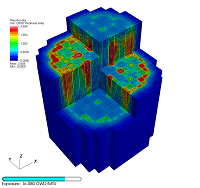
Capabilities:
MAMBA (MPO Advanced Model for Boron Analysis) simulates three-dimensional crud growth along the surface of fuel rods within light-water reactors. For pressurized-water reactors (PWRs), MAMBA also simulates the boron uptake in the crud layer during cycle operation. MAMBA includes models for crud heat transfer and boiling, chemical kinetics and transport, chemistry thermodynamics (including boron solubility), and reactor primary system source term modeling for crud constituent release and tracking (e.g. Ni and Fe).
Applications:
MAMBA calculations include crud induced power shift (CIPS), which is the adverse effect on nuclear power distribution due to boron uptake in the crud layer, and crud induced localized corrosion analysis which can have an adverse effect on fuel performance.
Integrations:
MAMBA is tightly coupled to the neutron transport code, MPACT and the thermal-hydraulics code within the VERA code suite.
Coming Soon:
Current development activities are focused on use of physics-based calibration methods utilizing operating reactor flux map data for determination of unknown crud model parameters.
Contacts:
- Ben Collins ([email protected])
Publications:
Reports:
Access:
Get access to MAMBA on the VERA website.
 Marmot
Marmot
 Marmot
Marmot 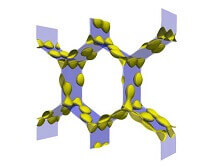
Capabilities:
Marmot solves the phase-field equations that resolve evolving microstructure features (mesoscale) and is used to develop empirical-like material models used at the engineering scale (e.g. BISON)
Applications:
Supports all fuel types in BISON
Integrations:
Marmot can be coupled to the binary collision Monte Carlo radiation damage application, Magpie, and engineering scale codes such as BISON or Grizzly
Coming Soon:
Coupling to commercial thermodynamic and kinetic databases for high fidelity materials models
Contacts:
- Larry Aagesen ([email protected])
Publications:
- An object-oriented finite element framework for multiphysics phase field simulations
- Order parameter re-mapping algorithm for 3D phase field model of grain growth using FEM
- How to apply the phase field method to model radiation damage
- Grand-potential-based phase-field model for multiple phases, grains, and chemical components
- Rapid multiphase-field model development using a modular free energy based approach with automatic differentiation in MOOSE/MARMOT
Reports:
Access:
 MOOSE
MOOSE
 MOOSE
MOOSE 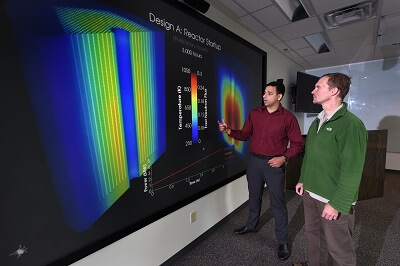
Capabilities:
The foundation of the multiphysics simulations is based upon the MOOSE framework. The use of MOOSE as the library for multiphysics applications standardizes code inputs, communication, and linking. The MOOSE framework is well suited to solve a wide range of fully-coupled physics problems. Additionally, MOOSE as a platform gives developers access to a wide range of tools and processes to build production quality applications including the pluggable, parallel regression test system and NQA-1 compliant processes.
MOOSE is a finite-element framework that aids in application development by harnessing state-of-the-art fully-coupled, fully-implicit multiphysics solvers while providing automatic parallelization, mesh adaptivity, and a growing set of physics modules. It is the framework upon which several of the Nuclear Energy Advanced Modeling and Simulation (NEAMS) program codes are based, including BISON, SAM and Pronghorn. It has also been used to successfully couple MOOSE-based codes (such as BISON) to external codes such as Nek5000 and the NRC’s FAST and TRACE applications.
Applications:
MOOSE is the underlying framework for most of the NEAMS physics tools as well as the capability for connecting multiple physics applications together. Individual codes employing MOOSE include Griffin, BISON, SAM, Pronghorn, and Grizzly.
Integrations:
MOOSE serves as the integrating tool for all applications built upon the framework as well as those that have been “wrapped” by MOOSE including Nek5000, MPACT, OpenMC, TRACE, and FAST
Coming Soon:
MOOSE recently gained an automatic differentiation capability and as well as finite volume discretization that can be coupled with existing finite element simulations. Improvements in dynamic application loading are being planned that will enable more flexible use of different combinations of applications for complex multiphysics simulations in support of advanced reactor concepts.
Contacts:
- Cody Permann ([email protected])
Publications:
Reports:
Access:
 MPACT
MPACT
 MPACT
MPACT 
Capabilities:
MPACT is a transient one-step code that primarily relies on the 2D/1D method for whole core transport and has been applied to pressurized-water reactors (PWRs) (dozens of operational cycles), and boiling-water reactors (BWRs). With this approach, 3D geometries are separated into 2D-radial and pin-homogenized, 1D-axial problems. For the 2D solvers, the method of characteristics is used and for the 1D solvers, P3 transport with a fourth-order Legendre-based spatial flux expansion is used. These 2D and 1D solvers are coupled through axial and radial transverse leakages and accelerated with a 3D-coarse mesh finite difference solver. MPACT uses inline cross section generation based on the subgroup method and uses ORIGEN for depletion.
Applications:
Nuclear reactor physics steady-state eigenvalue (core follow) and transient simulation (load follow and NRC Chapter 15 licensing events) with cross section feedback and material isotopic depletion.
Integrations:
Full integration with the thermal-hydraulics code CTF, fuel temperature codes CTFFuel and BISON, crud chemistry code MAMBA, and ex-core transport code Shift.
Coming Soon:
• BWR Support
• Extended transient analysis for series of operational transients
Contacts:
Publications:
Reports:
Access:
Get access to MPACT on the Vera website.
 NEAMS Workbench
NEAMS Workbench
 NEAMS Workbench
NEAMS Workbench Capabilities:
The NEAMS Workbench is an initiative intended to facilitate the transition from conventional tools to high-fidelity tools. The vision of the NEAMS Workbench is to provide a cross-platform graphical user interface (GUI) designed to facilitate problem creation, modification, navigation, validation, and visualization, as well as output and data file interaction as needed by new and experienced users in order to lower learning curves, enable understanding, and shorten research and development iterations and subsequent nuclear energy science and technology deployment timelines.
- Cross platform GUI supporting users on Windows, Mac, and Linux operating systems
- Integrated input development environment providing users application input autocompletion and checks, and quick navigation
- Remote job launch to Portable Batch Scheduler (PBS)-type scheduled commodity compute cluster and scheduler-less compute boxes
Applications:
- MOOSE applications (BISON, SAM, GRIFFIN, etc.) fuel performance and system analysis, etc.
- Argonne Reactor Computation (ARC) PyARC fast reactor workflow
- CTF-SubKit subchannel thermal hydraulics workflow
- Nek5000 v17 scalable high-order solver for computational fluid dynamics
- CTFFuel fuel analysis
- SCALE Code System for nuclear safety and design
- Monte Carlo N-Particle (MCNP) general purpose Monte Carlo particle transport
- Dakota sensitivity and uncertainty quantification and problem optimization
- VisIt data visualization and analysis toolkit
Integrations:
- Integrated data plotting and mesh data visualization capabilities
- Integrated constructive solid geometry (CSG) viewer providing users visual verification of CSG input
- Open Source language processing capabilities
Coming Soon:
- Support for Virtual Environment for Reactor Analysis (VERA) light-water reactor (LWR) core simulator input editing, job launch, and results analysis
- Integration of ParaView for data visualization and analysis
- Support for Nek5000 v19 and 20
Contacts:
- Rob Lefebvre ([email protected])
Publications:
Reports:
Access:
 Nek5000
Nek5000
 Nek5000
Nek5000 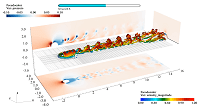
Capabilities:
Nek5000 is an open source high-fidelity computational fluid dynamics code based on the spectral element method. It can simulate fluid flows and heat transfer at high spatial discretization order using a variety of turbulence models including direct numerical simulation (DNS), large eddy simulation (LES), and Reynolds-averaged Navier-Stokes (RANS). It has demonstrated impressive computational scalability, routinely running on leadership class high-performance computing (HPC) facilities. Nek5000 has a long history of excellent performance in international verification and validation benchmarks and continues to be used for a wide variety of fluid flow and heat transfer problems.
- High-fidelity simulation of fluid flow and heat transfer phenomena
- Multiple turbulence models: DNS, LES, RANS
- Variable fluid properties using a low-Mach model
- Analysis of complex flow physics, i.e. flow-induced vibration (FIV)
Applications:
Determination of friction factors, loss coefficients, and heat transfer coefficients
Integrations:
Integrations with MOOSE, SAM, OpenMC, PROTEUS, and Diablo
Coming Soon:
Improved robustness for the RANS models, wall functions for high-y+ turbulence models
Contacts:
- Dillon Shaver ([email protected])
Publications:
- Steady and unsteady calculations on thermal striping phenomena in triple-parallel jet
- Flow-induced vibration analysis of a helical coil steam generator experiment using large eddy simulation
- High fidelity simulation and validation of crossflow through a tube bundle and the onset of vibration
- Invariant analysis of the Reynolds stress tensor for a nuclear fuel assembly with spacer grid and split type vanes
- Calculation of Friction Factors and Nusselt Numbers for Twisted Elliptical Tube Heat Exchangers Using Nek5000
- Spectral and modal analysis of the flow in a helical coil steam generator experiment with large eddy simulation
- Verification and validation of large eddy simulation with Nek5000 for cold leg mixing benchmark
- Simulation of Boiling Two-Phase Flow in a Helical Coil Steam Generator Using the Spectral Element Code Nek-2P
- Evaluation of hot channel factor for sodium-cooled fast reactors with multi-physics toolkit
Reports:
Access:
Get access to Nek5000 from Argonne National Laboratory.
 Pronghorn
Pronghorn
 Pronghorn
Pronghorn 
Capabilities:
Built on top of MOOSE, Pronghorn is a multi-dimensional thermal-hydraulics (TH) code for advanced nuclear reactors. It has two main capabilities:
- Intermediate-fidelity, coarse-mesh computational fluid dynamics (CFD) with specific friction factors and heat exchange coefficients for most advanced nuclear reactors.
- Subchannel modeling with adapted closures for square and triangular/hexagonal pin lattices and for assemblies with or without spacer/mixing grids and/or wire wrappers.
Pronghorn supports the following thermal-hydraulics numerical analyses:
- Fluid Types: incompressible, weakly compressible, and compressible flow
- Flow Configurations: free flow, porous media flow, or two-phase flow
- Flow Regimes: laminar, turbulent, and transitional regimes with or without buoyancy effects
- Numerical Solvers: segregated (linear) or fully coupled (nonlinear) solves using the Finite Volume Method (FVM) or the stabilized Continuous Finite Element Method (CFEM)
Applications:
Multidimensional thermal-hydraulics analyses of reactor core and auxiliary components for various reactor types under steady-state, operational transients, and accidental scenarios to support design optimization, reactor licensing, and operation. Pronghorn’s coarse-mesh and subchannel approaches also enable rapid scoping studies and design iterations.
Pronghorn is particularly well-suited for:
- Gas-Cooled Pebble-Bed (PBR) and High-Temperature Prismatic Core Reactors
- Molten Salt Reactors (MSR)
- Fluoride-Salt Cooled High-Temperature Reactors (FHR)
- Liquid-Metal Cooled Reactors (LMR)
Integrations:
As a MOOSE-based application Pronghorn can be coupled to any other MOOSE-based code via the MultiApp system. Recent examples of coupling are with:
- Griffin for coupled neutronics – thermal-hydraulics analyses including multi-dimensional temperature and density feedback and neutron precursor drift.
- BISON for coupled thermomechanics – thermal-hydraulics analyses involving conjugate heat transfer and fluid-structure interaction problems.
- MOOSE’s Thermal-Hydraulics Module (THM) and SAM for coupled reactor core-system analyses.
- Sockeye for coupled core thermal-hydraulics analyses with heat pipe cooling.
Coming Soon:
- Multiscale coupling with NEK5000 with plug-and-plat interface for agnostic, space-dependent calculation of friction factors and heat exchange coefficients based on higher fidelity calculations.
- Pronghorn-based physics components to directly integrate multidimensional coarse-mesh CFD or subchannel components into systems code models.
Contacts:
- Mauricio Tano-Retamales ([email protected])
Publications:
- Validation of Pronghorn friction-dominated porous media thermal-hydraulics model with the SANA experiments
- Improved natural convection heat transfer correlations for reactor cavity cooling systems of high-temperature gas-cooled reactors: From computational fluid dynamics to Pronghorn
- A workflow leveraging MOOSE transient multiphysics simulations to evaluate the impact of thermophysical property uncertainties on molten-salt reactors
- Depletion-driven thermochemistry of molten salt reactors: review, method, and analysis
- Development of a Single-Phase, Transient, Subchannel Code, within the MOOSE Multi-Physics Computational Framework
- Demonstration of Pronghorn’s Subchannel Code Modeling of Liquid-Metal Reactors and Validation in Normal Operation Conditions and Blockage Scenarios
- MOOSE Navier Stokes Module
- Pronghorn: A Multidimensional Coarse-Mesh Application for Advanced Reactor Thermal Hydraulics
Reports:
- Modeling of Prismatic High Temperature Reactors in Pronghorn
- Improvements in High-Temperature Gas-Cooled Reactor Modeling Capabilities in the Pronghorn Code
- Overlapping Domain Coupling of Multidimensional and System Codes in NEAMS-Pronghorn and SAM
- Improvement of numerical methods in Pronghorn
- Multiphysics for nuclear energy applications using a cohesive computational framework
- Pronghorn Theory Manual
Access:
Get access to Pronghorn through INL’s Nuclear Computational Resource Center.
 SAM
SAM
 SAM
SAM 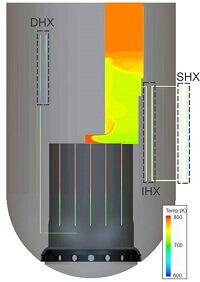
Capabilities:
System Analysis Module (SAM) is a fast-running, whole-plant transient analysis code with improved-fidelity capability for fast turnaround design scoping and safety analyses of advanced non-light-water reactors.
- One-D flow networks represent general fluid systems such as the reactor coolant loops
- Multi-channel representation of fuel assembly and inter-assembly heat transfer modeling
- Point kinetics model with various reactivity feedback including thermal expansions
- Specific component models for reactor transient simulations
- A general mass transport capability for species transport
- Control and trip system models
- Reduced-order multi-dimensional flow models for thermal mixing and stratification modeling
Applications:
System transient analysis of various advanced reactor types for design optimization and licensing support, under operational transients and accident conditions
Integrations:
Coupling with Mammoth, Proteus, Nek5000, and BISON, STAR-CCM+, SAS4A/SASSYS-1, and TRACE
Coming Soon:
- Fluid freezing/thawing modeling capability for modeling of overcooling events in liquidsalt-cooled reactors
- General mass transport modeling capability in the reduced-order multi-dimensional flow model, for application to molten salt fueled (fast spectrum) reactors
- Tritium transport modeling in molten salt cooled reactors
Contacts:
- Rui Hu ([email protected])
Publications:
- A computationally efficient method for full-core conjugate heat transfer modeling of sodium fast reactors
- A fully-implicit high-order system thermal-hydraulics model for advanced non-LWR safety analyses
- Three-dimensional flow model development for thermal mixing and stratification modeling in reactor system transients analyses
- Thermal hydraulic model of the molten salt reactor experiment with the NEAMS system analysis module
- Benchmark Simulation of the Natural Convection Shutdown Heat Removal Test Facility Using SAM
Reports:
Access:
 SHIFT
SHIFT
 SHIFT
SHIFT 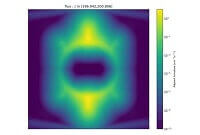
Capabilities:
A parallel, Monte Carlo solver for radiation transport application development on high-performance computing (HPC) platforms with multiple physics and geometry options. Shift is integrated with the Denovo deterministic solvers for hybrid radiation transport calculations and can execute on CPU and GPU based architectures.
Applications:
LWR and Non-LWR reactor analysis and design, radiation shielding, criticality safety, radiation dosimetry, and fusion system analysis. Shift supports two-step workflows to pre-generate cross sections for Griffin, reference reactor physics solutions for given temperature and density distributions, and ex-core detector or dose assessment.
Integrations:
Shift is part of the SCALE system and is integrated with ORIGEN for depletion and Denovo for hybrid radiation transport calculations.
Coming Soon:
Optimized pole data for continuous energy (CE) cross section data, on-the-fly doppler broadening, optimized CE MC full core depletion on GPUs. Shift-to-Griffin two-step workflow.
Contacts:
- Tara Pandya ([email protected])
Publications:
- Deterministically estimated fission source distributions for Monte Carlo k-eigenvalue problems
- Singular value decomposition of adjoint flux distributions for Monte Carlo variance reduction
- Nuclide depletion capabilities in the Shift Monte Carlo code
- Multigroup Monte Carlo on GPUs: Comparison of history- and event-based algorithms
- Continuous-energy Monte Carlo neutron transport on GPUs in the Shift code
- Flux renormalization in constant power burnup calculations
- Preliminary Validation of the Shift Monte Carlo Code for Fixed-Source Radiation Transport Problems
Reports:
Access:
Get access to SHIFT through SCALE.
 Sockeye
Sockeye
 Sockeye
Sockeye 
Capabilities:
Sockeye is a MOOSE-based heat pipe simulator and analysis tool. Heat pipe simulation offers the ability to accurately predict heat transfer for applications involving heat pipes, including heat-pipe-cooled microreactors. Additionally, it provides insight on heat pipe performance; operational heat pipe limits can be predicted in transient conditions and with greater flexibility than steady-state analyses can provide. Heat pipe simulation can be used by industry to inform heat pipe and microreactor design. Simulations can be performed to determine the range of operating conditions applied to a heat pipe and whether reliable heat pipe operation can be sustained in these conditions. If operational limits are encountered, heat pipe design can be altered to avoid these limits.
The following is a summary of Sockeye’s capabilities:
- Transient, 1-D, two-phase flow coupled to 2-D heat conduction
- Transient, 2-D, effective thermal conductivity model
- Analytic tools for analyzing heat pipe operating envelope
Applications:
Heat pipe transient simulation
Integrations:
Sockeye couples via heat transfer to other physics applications in the DireWolf microreactor simulator application
Coming Soon:
Robust phase disappearance, startup/shutdown modeling
Contacts:
- Joshua Hansel ([email protected])
Publications:
Reports:
Access:
 VERA
VERA
 VERA
VERA 
Capabilities:
- Used to solve neutronics, thermal-hydraulics, fuel performance, and coupled physics problems.
- Integrates physics components based on science-based models and state-of-the-art numerical methods.
- Verified and validated using data from operating light-water reactors, single-effect experiments, integral tests, and critical experiments.
- Optimized for efficient execution on multiple platforms, including leadership-class computers, advanced architecture platforms now under development, and industrial engineering workstation clusters.
Applications:
- Core follow calculations for a range of pressurized-water reactor (PWR) designs
- Integrated ex-core dose calculations
- Integrated crud simulation capability
- Integrated fuel performance
- Integrated capability to perform reactivity insertion events
Integrations:
VERA integrates MPACT for neutronics, CTF for subchannel analysis, ORIGEN for depletion, MAMBA for crud chemistry, BISON for fuel performance, and Shift for ex-core modeling and reference solutions.
Coming Soon:
- BWR Support
Contacts:
- Ben Collins ([email protected])
Publications:
Reports:
Access:
Get access to VERA at vera.ornl.gov.
 VERAShift
VERAShift
 VERAShift
VERAShift 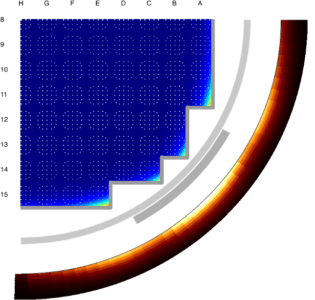
Capabilities:
VERAShift is a hybrid deterministic-Monte Carlo ex-core radiation transport interface package serving as the application programming interface (API) for integrating in-core depletion and thermal-hydraulics calculations with ex-core calculations performed with Shift. Its initial development began in 2015 and it is mainly used to perform ex-core transport calculations for LWRs in the VERA code suite. These calculations include vessel fluence, detector response including during reactor startup, and concrete fluence. VERAShift is also used as a verification and/or validation tool by utilizing its Monte Carlo eigenvalue solution capability.
Applications:
Vessel and reactor component fluence, detector response (including reactor startup), concrete fluence, and coupon fluence
Integrations:
MPACT, CTF and Shift
Coming Soon:
BWR geometry support for ex-core dose analysis. Efficient reference solutions for non-LWR calculations.
Contacts:
- Tara Pandya ([email protected])
Publications:
Reports:
Access:
Get access to VERAShift at vera.ornl.gov.
 Yellowjacket Corrosion Suite
Yellowjacket Corrosion Suite
 Yellowjacket Corrosion Suite
Yellowjacket Corrosion Suite Capabilities:
The Yellowjacket Corrosion Suite simulates leaching of species from a material in contact with a fluid in a flow loop and deposition from the fluid onto a solid surface. The current focus is fueled and un-fueled molten salts, but the capability can be applied to any heat transfer fluid (HTF). Fundamental to corrosion and mass accountancy in general, are thermophysical properties. These are generated using ab-initio and classical molecular dynamics simulations for molten salts and HTFs. The code suite is comprised of four fundamental parts
- Yellowjacket, a meso-scale phase field (PF) code for corrosion
- Mole, an engineering scale diffusion and reaction kinetics code
- A Gibbs Energy Minimizer (GEM) with an accompanying thermodynamic database (MSTDB-TC). The GEM is part of Yellowjacket.
- A database for prediction of thermophysical properties (MSTDB-TP) derived from simulations and available experiments (performed by other programs).
Applications:
- Thermophysical properties, thermochemical properties, and phase equilibria of molten salt systems
- Corrosion and fouling predictions in MSR flow loops
Integrations:
Coupling within Yellowjacket suite (Yellowjacket GEM and PF models and Mole)
Coming Soon:
- Coupling within Yellowjacket suite (Yellowjacket GEM and PF models and Mole)
- Coupling with Grizzly for chemistry-induced degradation of structural components
- Coupling with thermal hydraulic codes, e.g. SAM and Nek5000
Contacts:
- David Andersson ([email protected])
